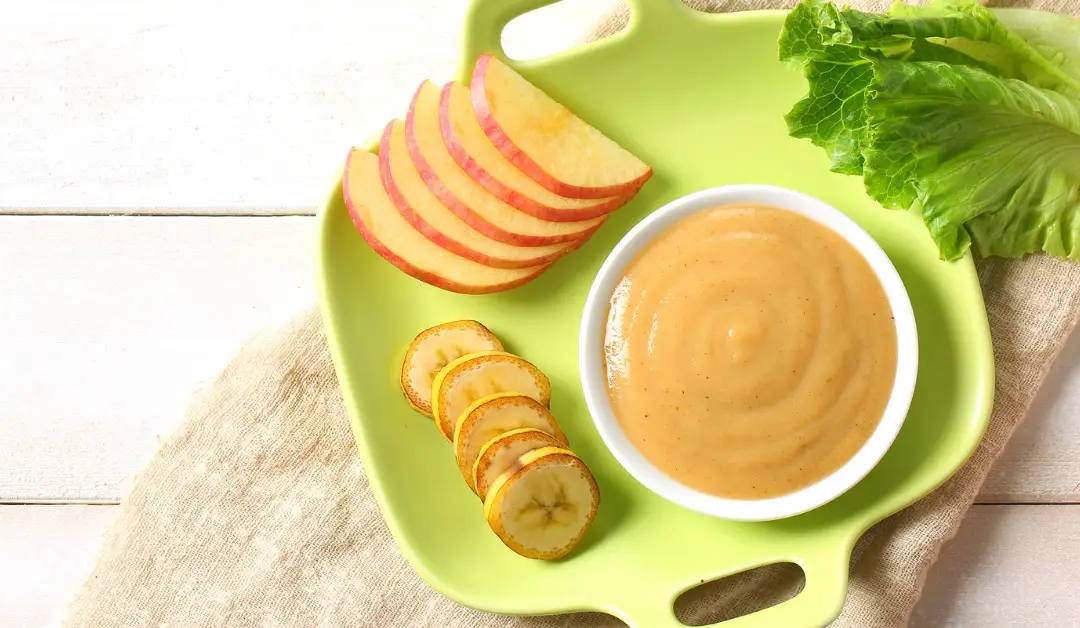The chances are that you must have heard the term ‘organic’ in almost all products – food, cosmetics, beauty products, and much more. The most essential in this category is the food that you consume daily. It goes directly into your system and affects you much more than products used on the surface of the body.
Food adulteration is one of the biggest problems worldwide. Even when there are tight regulations on food-grade components yet, we are not fully aware of the long-term effects of several compounds. In analogy, there are multiple chemicals used while our food is grown. These include insecticides, pesticides, weedicides, and chemical fertilizers. Spraying these chemicals on the plants, crops, and in the soil protects them from organisms and enriches the soil to increase the yield.
The government has strict regulations regarding the acceptable levels of chemical residues on food items. Most food products do not exceed these levels and are considered safe for consumption. People are now looking for organically grown alternatives because of the increasing awareness linking the chemicals with several diseases, especially cancers.
Table of Contents
What Are Organic Foods?

Food products produced without chemical or synthetic agents like insecticides, pesticides, and fertilizers, are organic foods.
There are two types of farming – conventional and organic. In conventional farming, farmers use insecticides, pesticides, and weedicides to kill insects, pests, and molds. Spraying pesticides and insecticides on plants leaves a residue on them. These chemicals enter our bodies when we eat this raw produce.
Organic produce, on the other hand, does not use these chemical pesticides and fertilizers with much lower levels of chemical residue. As parents, you took all care to avoid harmful substances during pregnancy that could affect your growing baby. You knew that the forming organs and tissues of the child are significantly sensitive to the effect of adverse chemicals that are probably not as harmful to adults. You realized the extra care required by your growing fetus, and you took steps to ensure your baby’s safety.
Many parents feel that newborns and kids are still growing. Their body systems, including the liver, which detoxifies toxins, are still immature, susceptible, and not as robust as that of an adult. You feel skeptical about exposing your young child to chemical residues and prefer to use organic produce.
Some of you may also feel that organic produce would also be richer in vitamins, minerals, and other nutrients, compared to conventional produce. Whether there is truth in this or not is explored in the following paragraphs.
With increasing demand, organic products are now available in separate sections in most supermarkets. Variety is the spice of life, no doubt. But, with the increased number of available options, choosing the right product for your baby may be a daunting task.
How is Organic Farming Done and How is it Relevant?
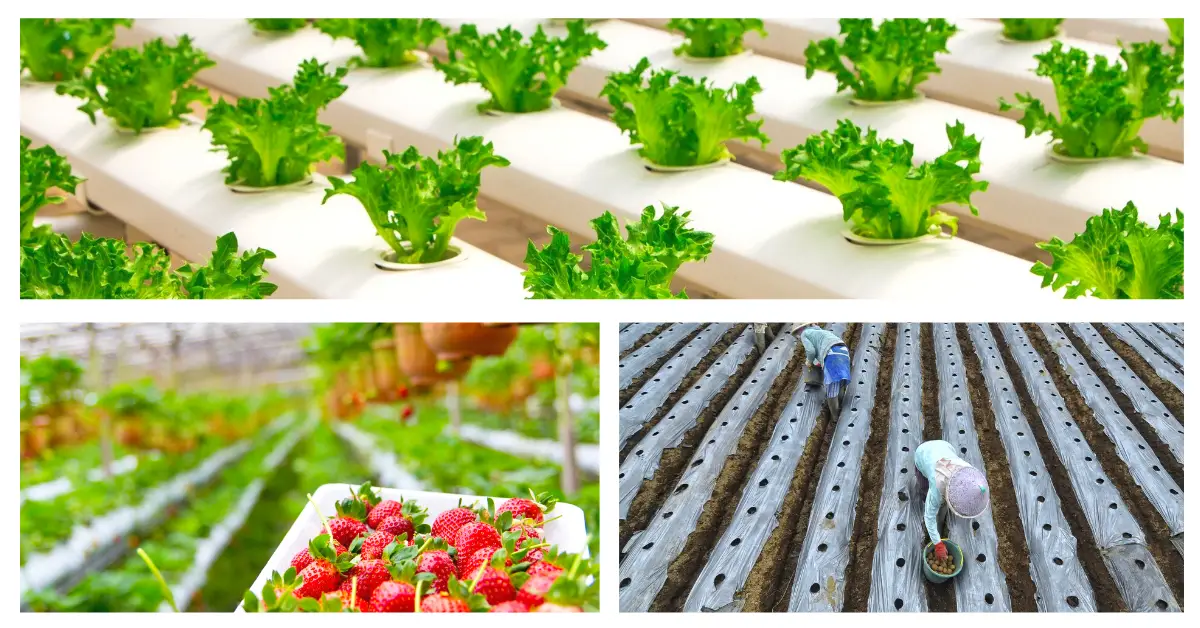
- Insecticides and pesticides – Almost all synthetic substances used to control insects and pests are prohibited.
- Fertilizers – Synthetic fertilizers are commonplace in conventional farming methods to improve soil quality by increasing nutrient content. Also, it is prohibited to use the sludge from sewage as fertilizer in organic farming.
- Food Preservation – Food irradiation destroys germs and diseases, but this is prohibited during food processing to be classified as organic.
- Antibiotic and hormone use on poultry and livestock is prohibited.
- Methods like genetic engineering that alter the genetic makeup of plants and animals aimed at improving produce and/or resistance to insects and diseases are not allowed in organic farming.
- To control pests – Insect traps, allowing other animals or insects that feed on those that are harmful to crops. Also, some natural pesticides are approved for use.
- To control weed growth – Mulching is allowed in organic farming.l
- To improve soil fertility – Crop rotation is a simple method to allow the soil to regain nutrients lost during one crop by rotating it with another crop. Plowing is also known to rotate the soil layers and improve the nutrient content of the soil. Organic manure from plants and animals are allowed. Simple plant waste or green manure helps to return lost nutrients back to the soil.
- For livestock – Pastures for grazing, good living conditions, organic food, vaccinations, and ability to move outdoors are required to be classified as organic.
- Guidelines for certified organic beef require cattle to have access to pasture grazing for at least a period of 120 days in a year.
Organic farming is eco-friendly and does not contribute to soil, water, or air pollution. It thus improves the quality of soil, water, and air, an effect much welcome in current times. The regulations for organic farming promote soil biodiversity, a concept that holds the key to sustainability.
It is also a cruelty-free method wherein livestock is not subjected to painful injections and medications. It aims to provide safe and healthy habitats for livestock, allowing them to grow in their natural environment rather than keeping them captive in enclosed areas.
Organic farming is the natural way of rearing, the way it was supposed to be. With increased requirements, commercialization, and greed, man has found methods that were convenient and lucrative.
Is Organic Food Safer and More Nutritious Than Conventionally Grown Produce?
Likewise, there are differences in the product, but how they affect long-term health is unknown, and this needs more studies. Whether there are distinct nutritional benefits of consuming organic food over conventional produce is subject to further studies. However, some of the potential benefits could be discussed here for your information.
The pesticide residue on organic produce is bound to be much lower than that found in conventionally grown products for obvious reasons. However, organic produce can be contaminated with pesticides that reach them via the air from nearby conventional produce farms. Additionally, some organic farming-approved pesticides may also leave a residue.
Conventionally grown produce has acceptable levels of pesticide residue, and this is strictly regulated and monitored by the government. Due to this, there is no conclusive advantage of organic foods over conventional produce detected. The ultimate long-term health outcomes are not definite today, requiring extensive studies and follow-up.
Toxic element cadmium is harmful to health, and the level of this metal is significantly lower in grains grown organically as compared to conventionally grown grains4. This difference is not evident in fruits and vegetables, but it needs further studies.
Not only cadmium, other heavy metals like arsenic are also found in non-organic baby foods. Arsenic affects the growing brain and the IQ or intelligence quotient. In addition, mercury and lead, the two other offending heavy metals, were also found in substantial amounts in routine baby foods like rice and sweet potato products5.
Bacterial contamination is a potential risk for both organic and conventional meat, poultry, and dairy products, and there is no significant difference between them. However, since antibiotics are commonly used with conventional livestock, the chances of antibiotic-resistant bacteria are greater with conventional foods. Illnesses caused by consumption of such foods may require stronger antibiotics, may cause more severe disease, and may be more difficult to treat.
Some studies have shown higher levels of essential nutrients in organic produce than conventional crops. For example, flavonoids, a type of antioxidant with proven antioxidant properties, is found to be more concentrated in organic produce6.
Organically raised poultry and livestock are fed organic matter, for example, cattle feed on pastures and alfalfa. Organically produced meats, eggs, poultry, and dairy products are found to have higher levels of omega-3-fatty acids7. This is the fatty acid present in fish and is considered healthy for the heart.
Are Organic Foods The Healthiest Choice for Babies?

You may feel that organic foods should be the food of choice for babies considering their alleged benefits over conventionally produced food. Trust me, you are not alone! This is a kind of ‘go green’ revolution called ‘baby organics’ that seems to be pervading all aspects of rearing your baby, including the food that he/she consumes. Many of you are also motivated because these are more environmentally friendly.
Organic baby food indeed limits the number of chemicals, synthetic products like pesticides and fertilizers that your baby is exposed to. However, the nutritional benefit of organic baby foods over conventional baby foods is not evident. In other words, organic baby foods are not nutritionally superior to conventional baby foods as per current research8.
Some experts argue that lack of evidence does not negate the positive effects of organically grown foods. Also, the negative effects of non-organic foods are well-known. Kids are particularly sensitive to chemicals, artificial products, and techniques used in food. Younger the kid, the more the chances of long-term damage. These kids have their entire lives ahead of them, and the ill effects can manifest early or late in life.
These chemicals affect their brains and the growth of different organs. Such chemicals also cause strain on the liver and the kidneys. And the problem is with the repeated and sustained exposures, which can accumulate in the body parts and stay there for years.
The United States Department of Agriculture or USDA does not claim that organic foods are safer or more nutritious than non-organic foods. It is your personal choice. While some parents feel that it makes sense to feed their babies with organic foods, other parents sense that their kids prefer the taste of organic foods or that these products are eco-friendly and may prefer these over the non-organic ones.
Organic foods are typically more expensive than their non-organic counterparts due to the restrictions and requirements in farming practices. It may pose a constraint for you, and it does not mean that you stretch your means to provide organic food to your baby. It also does not mean that you starve your baby unless you have the preferred organic foods.
Some parents use indigenous methods like sourcing the organic ingredients from local farmers or grocery shops, buying in bulk, and preparing their baby food in food processors.
What is important, is that you do not restrict a particular food to your child just because it is non-organic. It is necessary to expose your baby to all kinds of foods unless there are allergies or other health conditions. To ensure acceptance to a variety of foods, for balanced nutrition, preventing nutritional deficiencies.
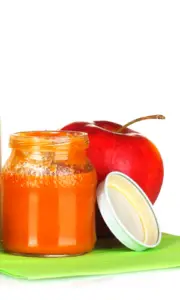
What Are The Things You Should Know About Feeding Your Baby?
Choose fresh grains, fruits, and vegetables over canned ones. Canned foods have preservatives, are sugar-rich, and may lose some vital nutrients sensitive to processing.
Avail seasonal fruits and vegetables, ensuring that you are getting fresh produce. Also, seasonal foods are easier to digest and provide nutrients as per the seasonal requirements for the body. Introduce a variety of foods in consultation with your pediatrician. Developing flavors for different foods set the precedent for a healthy eating lifestyle for the entire lifetime. Use a mix of food groups to ensure that all nutrients are available in the right proportions to avoid over-or under-nutrition. Washing fruits and vegetables under fresh running water helps clean them. It removes the dirt and germs that may be present on the surface. Also, it helps wash off pesticide residues to some extent.
Some people prefer placing the uncut fruit or vegetable in warm water. If there is chemical residue, it leaves the surface in some time and is seen as oil droplets in the water. You know that this product has visible traces of pesticide residue, and you can avoid buying from this source.
Peeling fruits and vegetables can help remove surface residues. But this also removes essential nutrients and fiber from the food. There are some untested fruit and vegetable washing devices in the market. Their efficacy or side effects are unknown.
Lastly, please do not blindly believe ‘organic’ labels. Though manufacturers are expected to follow honest practices, personal gains may offset moral duties occasionally. To make products sellable, manufacturers can loosely use terms that may appeal to you as the consumer. Though there are regulations in place, you also must go through the list of ingredients on the label. At times, the fine print may reveal traces of high sodium, unsaturated fats, or sugar content.
Choose fresh grains, fruits, and vegetables over canned ones. Canned foods have preservatives, are sugar-rich, and may lose some vital nutrients sensitive to processing.
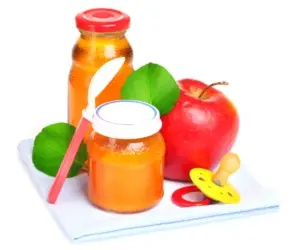
Avail seasonal fruits and vegetables, ensuring that you are getting fresh produce. Also, seasonal foods are easier to digest and provide nutrients as per the seasonal requirements for the body. Introduce a variety of foods in consultation with your pediatrician. Developing flavors for different foods set the precedent for a healthy eating lifestyle for the entire lifetime. Use a mix of food groups to ensure that all nutrients are available in the right proportions to avoid over-or under-nutrition. Washing fruits and vegetables under fresh running water helps clean them. It removes the dirt and germs that may be present on the surface. Also, it helps wash off pesticide residues to some extent.
Some people prefer placing the uncut fruit or vegetable in warm water. If there is chemical residue, it leaves the surface in some time and is seen as oil droplets in the water. You know that this product has visible traces of pesticide residue, and you can avoid buying from this source.
Peeling fruits and vegetables can help remove surface residues. But this also removes essential nutrients and fiber from the food. There are some untested fruit and vegetable washing devices in the market. Their efficacy or side effects are unknown.
Lastly, please do not blindly believe ‘organic’ labels. Though manufacturers are expected to follow honest practices, personal gains may offset moral duties occasionally. To make products sellable, manufacturers can loosely use terms that may appeal to you as the consumer. Though there are regulations in place, you also must go through the list of ingredients on the label. At times, the fine print may reveal traces of high sodium, unsaturated fats, or sugar content.
Can You Make Organic Baby Food At Home?

Yes, you read right! You can make your baby food using organic ingredients that you source locally. Several parents find this to be the best compromise between the potential effects of non-organic food and the expensive option of commercially available organic baby foods.
Many parents feel this is the best, safest, and healthiest option which gives them better control over what they are feeding their baby. Also, it is not so difficult to make this food. Parents are willing to invest the time and effort required to enjoy that relaxed good night’s sleep.
The most important part of this activity is buying organic ingredients. The following paragraphs will help you understand this part and make informed and fitting choices for your baby.
Use grains or lentils or pulses or a mix of two or three ingredients and grind it into a powder. You can store this protein-rich powder in the freezer for a couple of months and cook it like porridge and flavor with salt.
Begin with organic fruit or vegetable, singly or in combination. You need to transform this into a palatable consistency. You can either steam the vegetables or fruit like an apple. For other fruits, you can just peel them, remove the seeds, and puree them. You can make a wholesome meal of the fruit/vegetable puree and the porridge. At other times, you can mash using a fork, like a ripe, soft banana.
You can also add a few drops of organic clarified cow milk butter with a few meals. It provides essential fat-soluble vitamins and keeps your baby satisfied to enjoy a good nap.
Be sure to introduce one new food item at a time to look for any allergy, indigestion, or flatulence. If tolerated well, repeat it for two or three days at a stretch so that your baby gets used to the flavor. Do this before you introduce another food item.
Try to steam over boiling. Even if you are boiling, do not drain the water as it contains several nutrients. Do not boil with excess water. Also, you may need to overcook initially to help indigestion. But, as your baby grows avoid overcooking as it destroys heat-sensitive vitamins.
Always check the temperature of the food that you are feeding your baby. It is always a good idea to serve fresh.
You can mix vegetables and fruits according to your and your baby’s liking. This practice will ensure that your baby explores different tastes and is ready for a life of healthy eating. Also, the mix of ingredients will ensure that your baby gets balanced nutrition. Such organic feeding also has advantages like fewer illnesses, fewer stomach upsets, lesser flatulence and colic, fewer allergies, and lower incidence of obesity.

Some other tips include:
- Maintain hygiene while preparing and feeding your baby. Wash your hands, avoid cross-contamination.
- Cook foods adequately, especially meats, poultry, and other foods that are difficult to digest.
- Scrub fruits and vegetables before processing.
- Be sure to thoroughly remove small seeds and pieces or chunks that have not blended properly.
- Do not use too much salt.
- Avoid additional sugar, encourage your baby to appreciate natural flavors. You can season with simple organic spices that are acceptable.
- Do not mix too many ingredients, keep it simple initially when you are trying out new foods.
- You can safely mix any food with breast milk, which is handled as per recommendations.
What Is The Difference Between Organic And Natural?
To many of you organic, and natural are interchangeable terms. However, that is not true. ‘Organic’ implies a method of production and processing, as you have seen in the previous paragraphs. ‘Natural’ on the label, on the other hand, refers to the ingredients in the food. It means that the product is free from artificial flavors, colors, odors, and preservatives. It does not have any connection with the materials used and the methods followed in the manufacturing and processing of foods8.
Additionally, you may come across labels that mention ‘free-range’ or ‘hormone-free’; these are not synonyms of ‘organic’. The former may mean that the meat, poultry, or dairy products are from animals that were not treated with hormones like growth hormones or prolactin. But as mentioned previously, there are specific guidelines during production and processing that need to be fulfilled for the product to be classified as organic.
How Do the Different Labels on Food Products Mean?
This is probably one of the most relevant questions that you should address if you are opting for organic foods. There are strict regulations that the food has to satisfy before it qualifies as organic. These criteria are set by the U.S. Department of Agriculture (USDA). It has set up an organic certification program that requires all organic foods to meet strict government standards encompassing all aspects like how such foods are grown, handled and processed.
A label that says ‘organic’ is not sufficient and you must not be misled by it. Any product has to be USDA certified to be certified as organic and say so on the product description or packaging. Such products will carry an official USDA Organic seal which looks like this.
However, you should also know that for producers who sell less than $5,000 a year in organic foods the USDA regulations are different. Such producers should also follow the guidelines for organic food production. But they do not need to go through the certification process. They can label their products as organic, but they may not use the official USDA Organic seal.
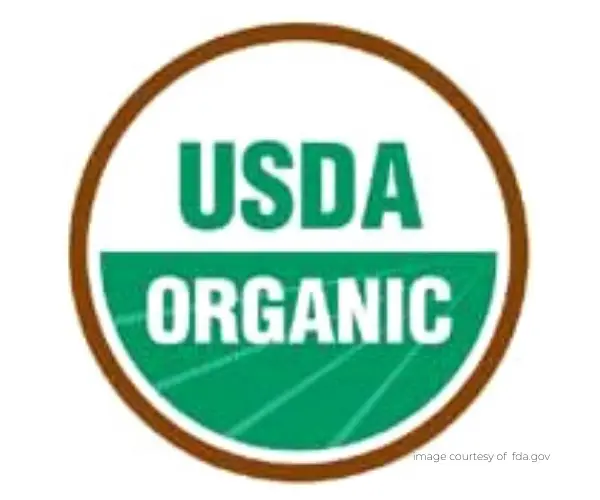
The USDA has specific guidelines related to how product labels should be worded and what they mean for every connotation9.
The label ‘Organic’ means that at least 95 percent of the ingredients used in manufacturing are USDA certified organic. This excludes salt and water and is valid for products that are made of multiple ingredients. Products certified 95 percent or more organic may display the USDA seal. Of course, the non-organic ingredients should also be on the USDA approved list of additional ingredients.
If a product made from multiple ingredients has USDA-certified organic compounds between 95 percent and 70 percent, such products can use the ‘Made with Organic’ label. Such products cannot use the USDA seal.
For products with less than 70 percent USDA-certified organic ingredients, neither the ‘Organic’ label nor the USFA seal can be used by the manufacturer. However, it can mention which of the ingredients are organic on the list of ingredients.
For food items with single ingredients like fruits, vegetables, meat, poultry, grains, and other similar items that are USDA certified organic, manufacturers can use the ‘100 percent Organic’ label and also the USDA seal. Multi-ingredient products can also use this label provided all their ingredients (other than salt and water) are USDA certified organic. They also use the USDA seal.
Which Are Some Organic Baby Food Brands?
Some brands are well-known and are available quite easily in most local supermarkets. Gerber organic, Plum Organics, Earth’s Best, Sprout Organic Baby Food, Once Upon a Farm are some of the available options that deserve a mention. This is a list of some of these brands which vary concerning products and prices. Many of them are common baby food brands that have separate organic baby food products. You can check these out and decide what products work best for you and your baby.

Which Foods Have The Most Pesticides?
The Environment Working Group or EWG uses data from USDA to report foods with the most and least pesticide levels. Foods are initially prepared as you would, i.e., they are washed, scrubbed, peeled, or whatever procedure you would do before consumption.
The 2021 Dirty Dozen, foods with maximum amount of reported pesticides include the following10:
- Strawberries – Strawberries are the most consistent topping the chart for six consecutive years. They are most likely to retain one or more pesticides even after washing adequately.
- Spinach – The EWG found that spinach contained banned pesticide which is classified as an neurotoxin in almost 70 percent of the samples tested.
- Kale, mustard, collard greens – These products show the pesticide which is banned as it is classified as a carcinogen.
- Nectarines – Samples of strawberry, apples, cherries, spinach, leafy greens were positive for multiple pesticides.
- Apples – Pesticide that can cause stomach and esophageal cancers was found in apples.
- Grapes
- Cherries
- Peaches
- Pears
- Sweet bell peppers and hot peppers – These were tested for the first time in 2021 and they contained multiple pesticides.
- Celery
- Tomatoes
In addition, citrus fruits like oranges, lemons, grapefruit, and mandarins contain a fungicide linked with cancers and hormone disruption.
Some of the banned chemicals seen in the above products were:
- DCPA
- Diphenylamine
- Organophosphates
- Chlorpyrifos
- Imazalil
- Thiabendazole
Imazalil, a fungicide used after harvest to keep fruits from molding on the way to market, was found on almost 90% of all the grapefruit, oranges, mandarins and lemons and they were present even after peeling.
Which Foods Have The Least Pesticides?

- Avocados – Less than 1 percent of the tested avocados had pesticide residues. The thick skin, which is peeled, is one big reason for this.
- Sweet corn – Less than 2 percent of the sweet corn that was sampled had pesticide residues. The study included corn on the cob and frozen kernels. However, this ranking did not include residues of glyphosate, also known as Roundup, a pesticide that some corn has been genetically modified to resist. The FDA has only recently started testing corn for glyphosate residues
- Pineapples – Less than 10 percent of tested pineapples showed pesticide residue. The thick prickly skin that is shaved off is a major factor in the positive result in this study.
- Onions – Less than 10 percent of tested onions revealed pesticide residues after removing the outer layers. However, organically grown onions are rich in flavonols that are healthy for the heart.
- Papayas – About 20 percent of tested samples revealed pesticide residues. The result is based on testing the flesh and discarding the skin and seeds. The skin that is peeled is responsible for this positive trend.
- Fresh Frozen Peas – About 20 percent of tested samples revealed pesticide residues. The fact that the pods were shelved to remove the peas is a factor for this. Snap peas did not do so well as they are consumed as a whole and they were tested as a pod.
- Eggplant – 25 percent of tested samples revealed pesticide residues. The eggplants were first rinsed with water for 15–20 seconds, then drained. This is good news as the samples were tested with intact peel.
- Asparagus – Only 10 percent of tested samples revealed pesticides. Asparagus was tested after the woody, bottom 2 inches of the spear were removed and the edible part rinsed under tap water for 15–20 seconds, then drained. Asparagus has an enzyme that may help break down malathion, a pesticide commonly used against beetles that attack the vegetable and this helps in reducing the pesticide levels.
- Broccoli – About 30% of broccoli samples had pesticide residues. The vegetable contains its own natural insect repellents, glucosinolates.
- Cabbage – Around 14 percent of tested cabbage samples revealed pesticide residues. The requirement of pesticide for cabbage is low because of inherent compounds in it that inhibit germs and also prevent cancer.
- Kiwi – 35 percent of tested samples revealed pesticide residues. The kiwis were tested with intact peel and after rinsing as the skin can be consumed.
- Cauliflower – About half of cauliflowers sampled revealed pesticides. Still, an associated pesticide imidacloprid can harm bees, which are vital for pollinating food crops. Therefore, organic cauliflower should be preferred to preserve the environment.
- Mushrooms – Around half of the mushrooms tested revealed pesticide residues.
- Honeydew melon – Around half of honeydew melons tested were free from pesticide residues, and those with residues had no more than four different types.The thick rind of honeydew melon protects against pesticides.
- Cantaloupe – Around 40 percent of samples tested revealed pesticide residues. The thick rind provides some protection against pesticides.However, harmful bacteria may contaminate the cantaloupe rind and transfer to the flesh when you cut the melon.Always wash and scrub the rind of cantaloupes before cutting — not only to reduce pesticide residues but also to remove potentially harmful bacteria.
Some amounts of sweet corn, papaya, and summer squash sold in the United States are produced from genetically modified seeds. Choose organic varieties of these crops if you wish to avoid genetically modified produce.
In conclusion, organic baby foods are becoming increasingly popular among parents, mostly due to the awareness regarding chemical and synthetic fertilizers and pesticides that remain as residues on fruits, vegetables, and other non-organic produce. There is no denying that kids who are fed on conventional foods have higher levels of pesticide chemicals in their urine as compared to those kids who eat organically grown foods.
Though there are no studies that reflect the positive role of organic produce over conventional produce, parents often prefer organic products for several reasons. Preparing your organic baby food using organic ingredients is an easy, cost-effective, and hygienic way of striking the right balance. If you want to purchase organic food, be sure that you are aware of the various terminologies and regulations that the USDA has defined in this context. Read the ingredient list carefully and make an informed decision knowing what you are opting for. But, don’t get hassled! With your heart in the right place, you will always make the right decision for your baby.
Enjoy raising your kids!
References:
3Forman J, et al. Organic foods: Health and environmental advantages and disadvantages. Pediatrics. 2012;130:e1406.
4Baranski M, et al. Higher antioxidant and lower cadmium concentrations and lower incidence of pesticide residues in organically grown crops: A systematic literature review and meta-analyses. British Journal of Nutrition. 2014;112:794.
5Jackson B, et al. Arsenic, Organic Foods, and Brown Rice Syrup.Environmental Health Perspectives. 2021;120:5
6Brantsaeter AL, et al. Organic food in the diet: Exposure and health implications. Annual Review of Public Health. 2017;38:2.1.
7Smith-Spangler C, et al. Are organic foods safer or healthier than conventional alternatives?: A systematic review. Annals of Internal Medicine. 2012;157:348.
8 Demory-Luce D, et al. Organic foods and children. http://www.uptodate.com/home.
Related Articles

Dr Kavita Ramanathan
Dr Kavita Ramanathan is a practising pathologist with over 12 years of clinical experience. Having completed her MBBS and MD in Pathology from the University of Mumbai, she went on to work for several institutions in India. As a medical writer, she writes to give practical tips to the non-technical audience.
As a mother to a young girl, motherhood is a topic that is close to her heart. Her own experience in raising her daughter while balancing her residency and medical career has taught her many practical aspects of successful child-rearing. Her knowledge of medicine and skill as a writer appeals to a broad spectrum of parents and mothers.
